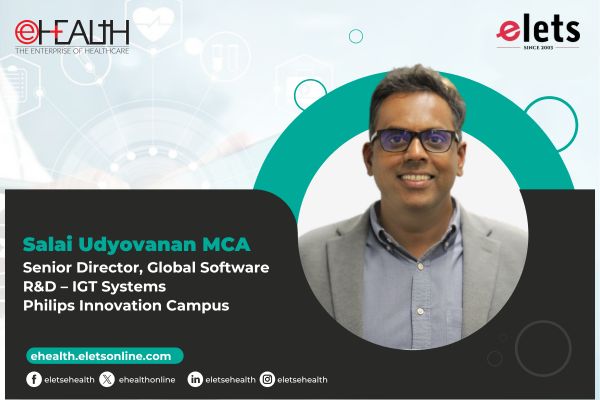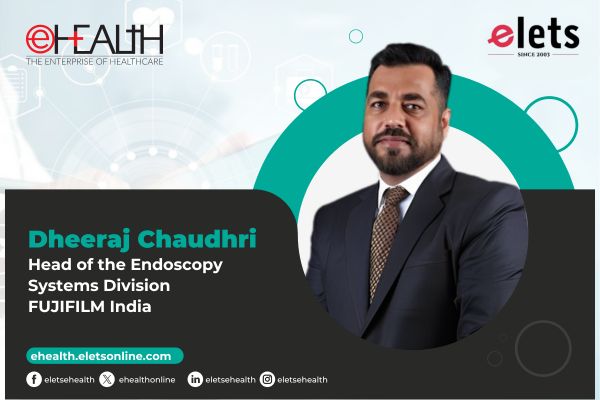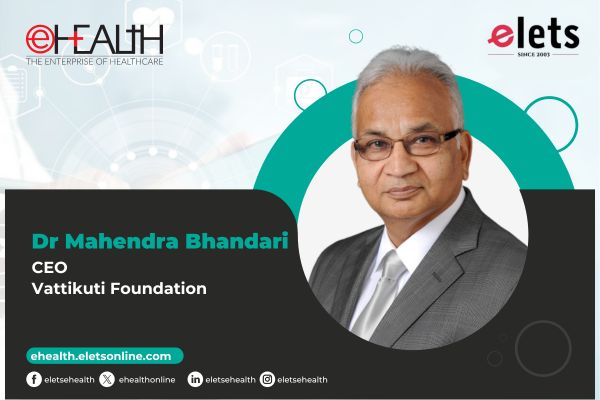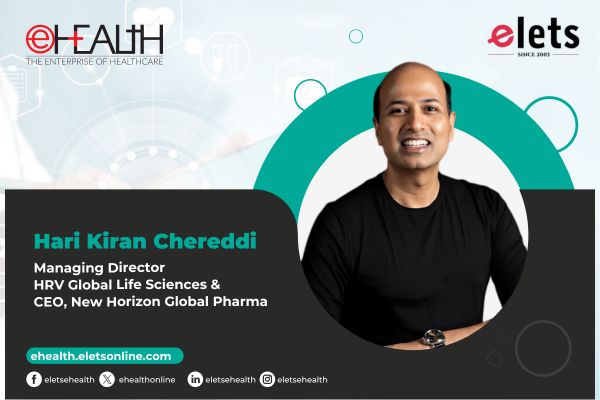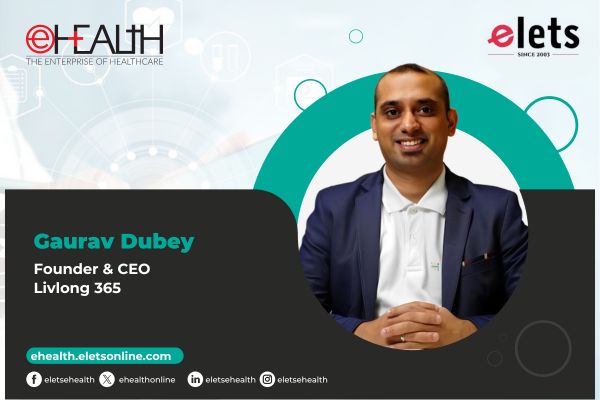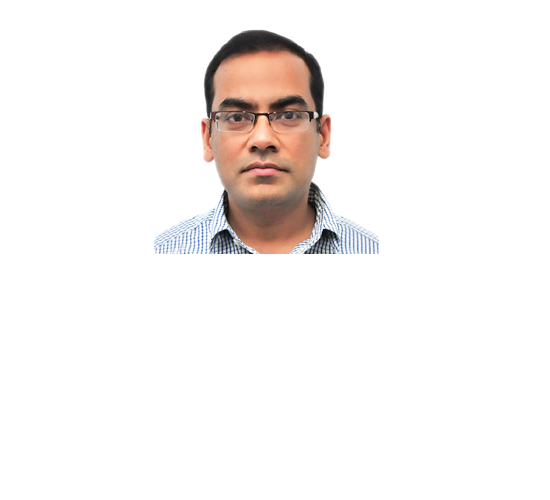

Alok Kumar, Mission Director, NHM, Government of Uttar Pradesh
Significant emphasis needs to be given on training, behavioural change and hand holding of front line health workers (ASHAs and ANMs) to realise total potential of all health programmes, says Alok Kumar, Mission Director, National Health Mission (NHM) & utive Director, State Innovations in Family Planning Services Agency (SIFPSA), Government of Uttar Pradesh, in an interview with Arpit Gupta of Elets News Network (ENN)
How mSehat Scheme has improved the performance of frontline health workers (accredited social health activists (ASHAs) and auxiliary nurse midwives (ANMs)) day-today work?

The mSehat scheme has been developed to empower the frontline health workers (ASHAs and ANMs) by providing smartphones/tablets with customised apps that will capture the complete Reproductive, Maternal, Newborn Child and Adolescent Health (RMNCH+A) continuum of care services.

The software is designed in way that it auto-generates the work plans and gives alerts to the service provider, as well as the registered beneficiary. The frontline health workers are provided on-demand training and regular skill updates. There is a provision of mobile phone based multimedia job aid for beneficiary counselling, registration, tracking, reporting, screening and referral. In due course of time, mSehat aspires to interact with the Mother & Child Tracking System (MCTS) and reproductive child health (RCH) e-governance schemes of the Government of India which will help in real-time data update.

The scheme covers a total population of 15.5 million in five priority districts viz. Sitapur, Bareilly, Mirzapur, Kannauj and Faizabad of Uttar Pradesh.

The mSehat app mainly covers Family Registration, Beneficiary Registration, Village Health and Index Register (VHIR), Village Health Nutrition Day (VHND), ASHA Incentives Alert, Training and Counselling, ASHA Kit, Work Plan, Grievance Redressal, Referral, Stock Management for VHND, ASHA Sangini Module, Dashboards for ANM, Ministry of Information and Communications (MOIC) and State, Reminders and Alerts to the beneficiary.
Manjhwan Block of Mirzapur district was the first block in the country to have achieved 100 per cent digitisation of the VHIR and further Mirzapur become the first district to complete 100 per cent feeding of the VHIR followed by Bareilly, Faizabad, Kannauj and Sitapur district.
mSehat intends to achieve 100 per cent coverage for timely and appropriate care for pregnant and lactating mothers, immunisation of pregnant women and infants, nutrition for children below 6 years and adolescent girls, and streamlining the process of data collection.
| mSehat “ Key Objectives | |
|---|---|
| 100% coverage for timely & appropriate care for pregnant & lactating mothers
Immunisation of pregnant women & infants Nutrition for children below 6 years & adolescent girls Streamlining the process of data collection |
|
What is the roadmap to achieve targets of Hausala Sajheedari programme, another big initiative undertaken by the Government of Uttar Pradesh?
Under the Hausala Sajheedari programme, the Government of Uttar Pradesh invites private health facilities and family planning surgeons in the State to join hands with the Government and contribute to the States commitment to Family Planning 2020, thereby achieving the larger vision of stabilising the population growth. The entire process of accreditation and reimbursement of private sector health facilities has been simplified through a dedicated online web portal called Hausala Sajheedari, which provides end-to-end solution designed and launched under the overall leadership and supervision of a state-level apex body called State Task Force (STF) under the patronage of Principal Secretary – Health and Family Welfare, Government of Uttar Pradesh. Hausala Sajheedari web portal provides one-stop solutions for private healthcare facilities and private sector surgeons in the state for online accreditation, empanelment, progress reporting, submission of claims and online reimbursement through bank transfers.
| mSehat “ Key Takeaways | |
|---|---|
|
Developed to empower the frontline health workers by providing smartphones/tablets with customised apps Auto-generates the work plans & gives alerts to the service provider Provides on-demand training & regular skill updates Provision of mobile phone based multimedia job aid |
|
The STF is led by the utive Director SIFPSA and has representation from Directorate of Health & Family Welfare, SIFPSA, Technical Support Unit of Bill & Melinda Gates Foundation (BMGF), other development partners, representatives of private sector viz Federation of Obstetrics & Gynaecological Societies of India (FOGSI) and Indian Medical Association (IMA) and representative of CMOs from the field. A four-member secretariat called the Private Sector Partnership Cell (PSP Cell) has been established at SIFPSA to support STF in its day-to-day functioning and maintenance, oversight and problem solving of Hausala Sajheedari web portal at the state level.
The potential for the programme could be well assessed by the fact that in last 6 months nearly 1,200 private hospitals, including clinical outreach teams (COTs), have applied online for accreditation, out of which, 468 (including 13 COTs) have been empanelled till now. Similarly, over 900 private sector surgeons have applied online to be empanelled with the state to provide sterilisation services (various techniques like MiniLap, laparoscopic sterilisation, no-scalpel vasectomy, etc.), out of which 481 have been empanelled so far. The overwhelming response from the private sector has encouraged the Government of Uttar Pradesh to have a vision to accredit at least 1,500 private hospitals and an equal number of surgeons for surgical family planning services in the private sector.
What are the major challenges in implementing e-governance projects in the State?
Whenever any new technology is introduced in the system, a formal training session is required to make it user-friendly. In the Health Department, I feel significant emphasis needs to be given on training, behavioural change and handholding of frontline health workers (ASHAs and ANMs). Besides, 2G/3G connectivity in remote villages is another major challenge, as our software and application run on Internet.
| Major Challenges | |
|---|---|
|
A formal training session is required to make the technology user-friendly Significant emphasis needs to be given on training, behavioural change & handholding of frontline health workers |
|
| Hausala Sajheedari Programme | |
|
Till now nearly 1,200 private hospitals, including COTs, have applied online for accreditation, of which 468 (including 13 COTs) have been empanelled till now Over 900 private sector surgeons have applied online to be empanelled with the state to provide sterilisation services, of which 481 have been empanelled so far |
|
Brief us about other projects of Department of Health & Family Welfare.
Sampoorna
The project Sampoorna has been launched under the umbrella of National Programme for Prevention and Control of Diabetes, Cardiovascular Disease and Stroke (NPCDCS) Programme by Department of Health & Family Welfare, Uttar Pradesh, which is unique, as it brings forth the preventive approach towards the noncommunicable diseases (NCDs) in women. NCDs cause high morbidity and mortality, which in turn have high impact on human productivity and healthcare expenditure. Therefore, Sampoorna Project has been launched with the goal to reduce mortality and morbidity due to non-communicable diseases in women. The project not only aims to screen for diseases, but also makes women aware about lifestyle modification and screening approaches which is important for prevention of non-communicable diseases, including cervical and breast cancers. Women are pivots of the families; hence, educating them and taking care of their health will definitely improve the familys health and will shift communitys perspective from curative healthcare to preventive healthcare.
Matritva Saptah
As a part of innovation, we had organised Matritva Saptah to create awareness among poor rural people regarding quality antenatal care (ANC) identification of health reimbursement plans (HRPs) backed with service provision. This campaign brought out a welcome social change and awareness among rural poor about components of quality ANC, which is the right of every pregnant woman. This also led to preference to institutional delivery. Awareness regarding anemia and blood pressure (BP) got enhanced overnight in the community. This would definitely help in bringing down the MMR in the state and thereby in the country.
Our Chief Minister Akhilesh Yadav issued a personal letter/appeal to Gram Pradhans for supporting this initiative and mobilising the maximum number of pregnant women and their families.
Matritva Saptah- Quick Gains
1,765,105 pregnant women identified by ASHAs and anganwadi workers (AWWs) in rural areas
1,584,086 (86.20 per cent) pregnant women attended Matritva Saptah sessions
All components of quality ANC made available, (HB, BP, weight, urine for sugar albumin, TT, abdominal exam)
113,911 (7.20 per cent) pregnant women found to be at high risk and referred for medical attention
General awareness enhanced immediately regarding quality ANC and high-risk factors
Be a part of Elets Collaborative Initiatives. Join Us for Upcoming Events and explore business opportunities. Like us on Facebook , connect with us on LinkedIn and follow us on Twitter , Instagram.
"Exciting news! Elets technomedia is now on WhatsApp Channels Subscribe today by clicking the link and stay updated with the latest insights!" Click here!







